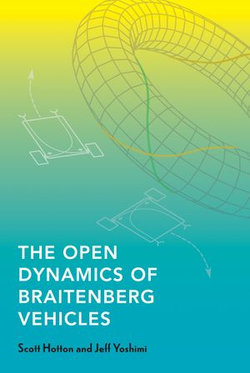An introduction to dynamical systems theory, a detailed mathematical analysis of pairs of Braitenberg vehicles, and a look at how these results apply to the study of physical and biological organisms.
Powering the concept of a Braitenberg vehicle, developed in 1984 by the Italian-Austrian cyberneticist Valentino Braitenberg, is the idea that simple systems can produce complex behaviors. A pair of interacting Braitenberg vehicles is simple, but they can meander, wind around, and follow each another in a number of ways. In this book, Scott Hotton and Jeff Yoshimi show how dynamical systems theory—in particular the theory of open dynamic systems—can be used to analyze pairs of these vehicles in great detail. The result of the authors’ long-standing collaboration at the intersection of mathematics, philosophy, cognitive science, and biology, The Open Dynamics of Braitenberg Vehicles offers a rigorous mathematical foundation for embodied cognition, especially when it comes to two-way interactions between an agent and its environment.
Following an introduction to dynamical systems theory, and the most detailed mathematical analysis of Braitenberg vehicles to date, Hotton and Yoshimi discuss how their results can be applied to the study of physical and biological systems. They also describe their work's relevance to debates in the philosophy of embodied cognitive science. Combining the best features of embodied and representational approaches to cognitive science, complete with code and simulations, The Open Dynamics of Braitenberg Vehicles provides an extremely accessible and visually rich look into the workings and applications of open dynamical systems.



Share This eBook: